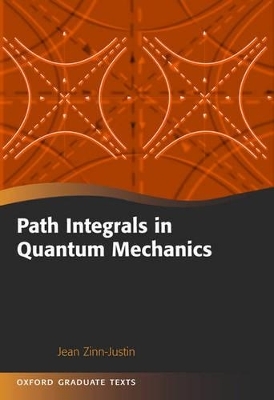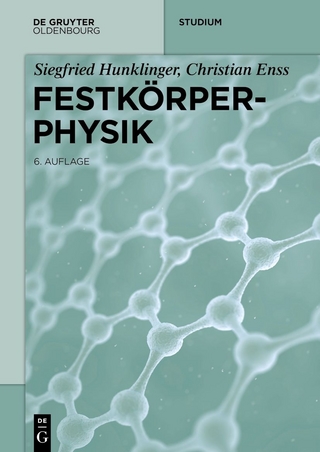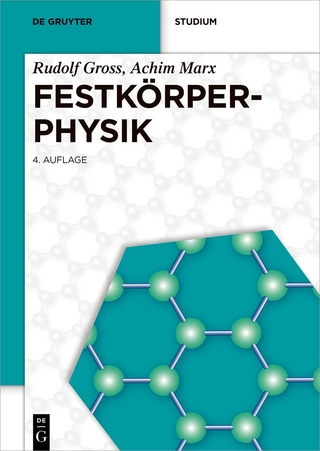
Path Integrals in Quantum Mechanics
Seiten
2004
Oxford University Press (Verlag)
978-0-19-856674-8 (ISBN)
Oxford University Press (Verlag)
978-0-19-856674-8 (ISBN)
Path integrals have allowed us to establish a direct mathematical relation between the theory of ordinary phase transitions and quantum field theory. This book introduces students to this topic within the context of ordinary quantum mechanics and non-relativistic many-body theory.
The main goal of this book is to familiarize the reader with a tool, the path integral, that not only offers an alternative point of view on quantum mechanics, but more importantly, under a generalized form, has also become the key to a deeper understanding of quantum field theory and its applications, extending from particle physics to phase transitions or properties of quantum gases.
Path integrals are mathematical objects that can be considered as generalizations to an infinite number of variables, represented by paths, of usual integrals. They share the algebraic properties of usual integrals, but have new properties from the viewpoint of analysis. They are powerful tools for the study of quantum mechanics, since they emphasize very explicitly the correspondence between classical and quantum mechanics. Physical quantities are expressed as averages over all possible paths but, in the semi-classical limit, the leading contributions come from paths close to classical paths. Thus, path integrals lead to an intuitive understanding of physical quantities in the semi-classical limit, as well as simple calculations of such quantities. This observation can be illustrated with scattering processes, spectral properties or barrier penetration effects. Even though the formulation of quantum mechanics based on path integrals seems mathematically more complicated than the usual formulation based on partial differential equations, the path integral formulation is well adapted to systems with many degrees of freedom, where a formalism of Schrödinger type is much less useful. It allows simple construction of a many-body theory both for bosons and fermions.
The main goal of this book is to familiarize the reader with a tool, the path integral, that not only offers an alternative point of view on quantum mechanics, but more importantly, under a generalized form, has also become the key to a deeper understanding of quantum field theory and its applications, extending from particle physics to phase transitions or properties of quantum gases.
Path integrals are mathematical objects that can be considered as generalizations to an infinite number of variables, represented by paths, of usual integrals. They share the algebraic properties of usual integrals, but have new properties from the viewpoint of analysis. They are powerful tools for the study of quantum mechanics, since they emphasize very explicitly the correspondence between classical and quantum mechanics. Physical quantities are expressed as averages over all possible paths but, in the semi-classical limit, the leading contributions come from paths close to classical paths. Thus, path integrals lead to an intuitive understanding of physical quantities in the semi-classical limit, as well as simple calculations of such quantities. This observation can be illustrated with scattering processes, spectral properties or barrier penetration effects. Even though the formulation of quantum mechanics based on path integrals seems mathematically more complicated than the usual formulation based on partial differential equations, the path integral formulation is well adapted to systems with many degrees of freedom, where a formalism of Schrödinger type is much less useful. It allows simple construction of a many-body theory both for bosons and fermions.
Jean Zinn-Justin is Head of DAPNIA/DSM/CEA-Saclay in France.
QUANTUM MECHANICS: MINIMAL BACKGROUND
| Erscheint lt. Verlag | 18.11.2004 |
|---|---|
| Reihe/Serie | Oxford Graduate Texts |
| Zusatzinfo | 13 b/w line drawings |
| Verlagsort | Oxford |
| Sprache | englisch |
| Maße | 172 x 246 mm |
| Gewicht | 737 g |
| Themenwelt | Mathematik / Informatik ► Mathematik |
| Naturwissenschaften ► Physik / Astronomie ► Festkörperphysik | |
| Naturwissenschaften ► Physik / Astronomie ► Hochenergiephysik / Teilchenphysik | |
| Naturwissenschaften ► Physik / Astronomie ► Quantenphysik | |
| Naturwissenschaften ► Physik / Astronomie ► Theoretische Physik | |
| ISBN-10 | 0-19-856674-3 / 0198566743 |
| ISBN-13 | 978-0-19-856674-8 / 9780198566748 |
| Zustand | Neuware |
| Haben Sie eine Frage zum Produkt? |
Mehr entdecken
aus dem Bereich
aus dem Bereich


